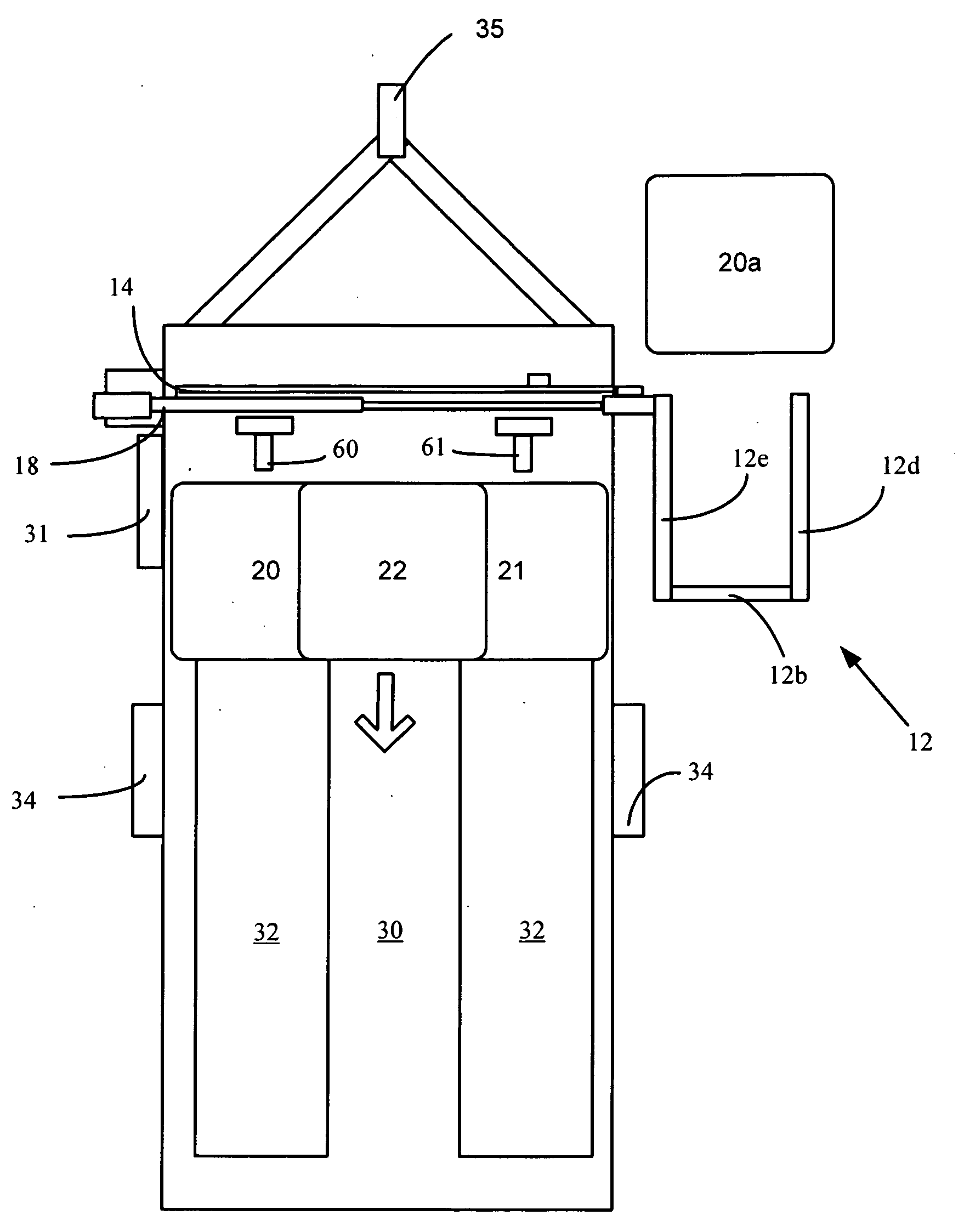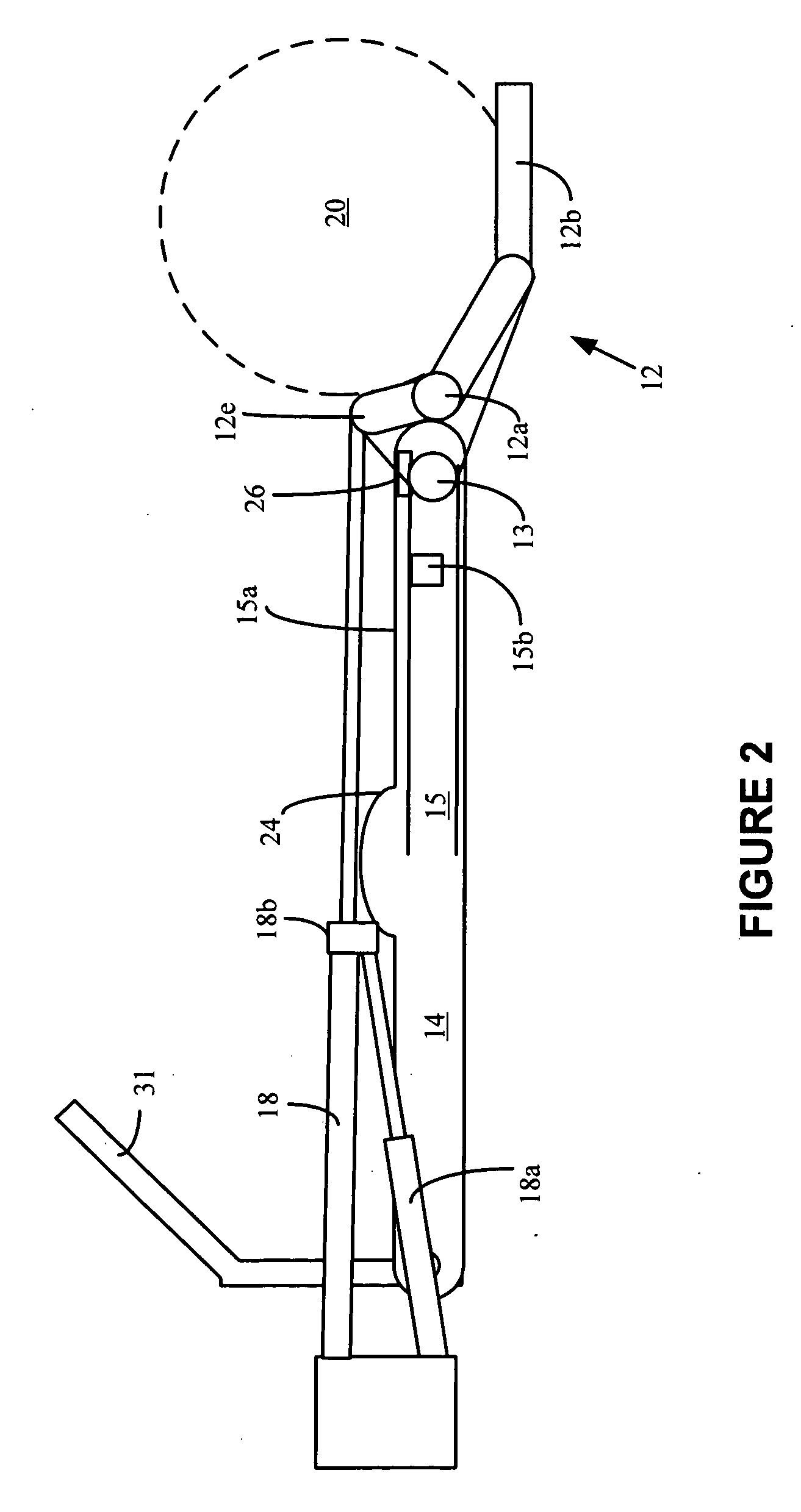Hay bale collection and stacking system
a stacking system and bale collection technology, applied in the field of hay bale collection and stacking system, can solve the problems of undesirable methods, difficult to move these bales with purely manual labor, and inability to meet the needs of hay bale collection and stacking, and achieve the effect of simple, reliable and robust, and prevent malfunction
- Summary
- Abstract
- Description
- Claims
- Application Information
AI Technical Summary
Benefits of technology
Problems solved by technology
Method used
Image
Examples
Embodiment Construction
System Overview
[0034]In accordance with the invention and with reference to the figures a hay bale collection and stacking system 10 is mounted on a flat bed trailer 30. The system generally includes cradle 12, pivot arm 14, main track 15, guide track 15a, latch 14b, one-way stop 26 and at least one hydraulic cylinder 18 mounted at the front end of the trailer 30. The trailer 30 includes wheels 34 and a trailer hitch 35 as known to those skilled in the art.
[0035]More specifically, and as shown schematically in FIGS. 1 and 2, the cradle 12 includes a track pivot wheel 13 able to slide and pivot within main track 15 and a cradle pivot wheel 12a able to roll along the guide track 15a that collectively enables both horizontal and vertical translation of the cradle from an outboard position as shown in FIG. 2 and various inboard positions as will be described in greater detail below and shown in FIGS. 3-11. As shown, a main hydraulic cylinder and piston 18 is operatively attached between...
PUM
 Login to View More
Login to View More Abstract
Description
Claims
Application Information
 Login to View More
Login to View More - R&D
- Intellectual Property
- Life Sciences
- Materials
- Tech Scout
- Unparalleled Data Quality
- Higher Quality Content
- 60% Fewer Hallucinations
Browse by: Latest US Patents, China's latest patents, Technical Efficacy Thesaurus, Application Domain, Technology Topic, Popular Technical Reports.
© 2025 PatSnap. All rights reserved.Legal|Privacy policy|Modern Slavery Act Transparency Statement|Sitemap|About US| Contact US: help@patsnap.com



